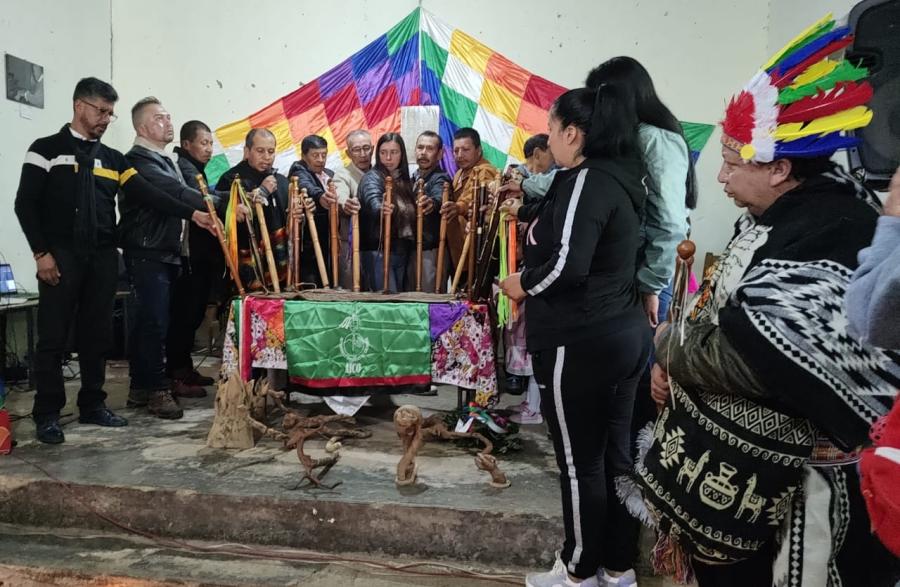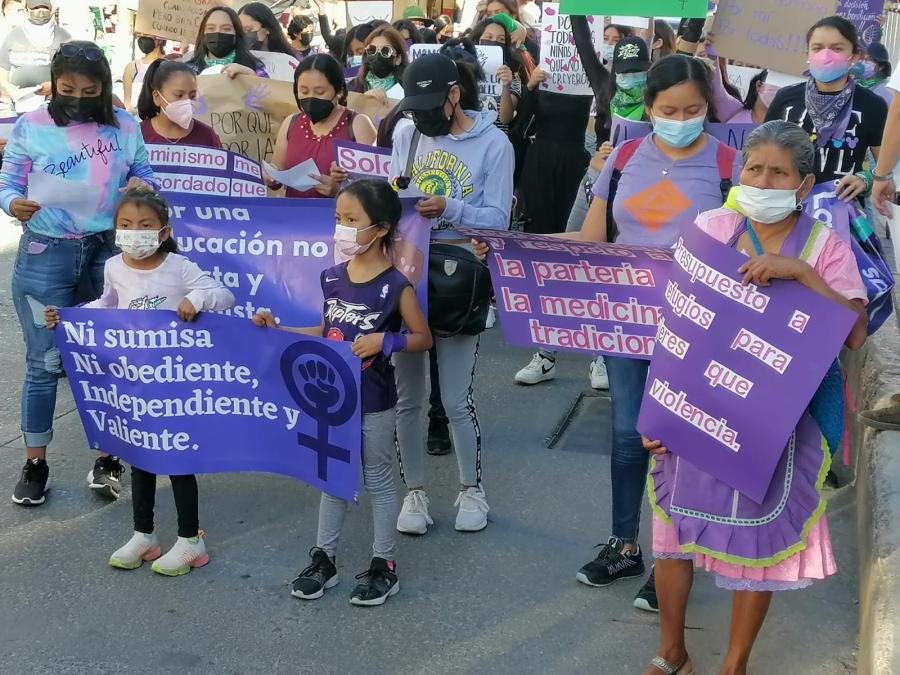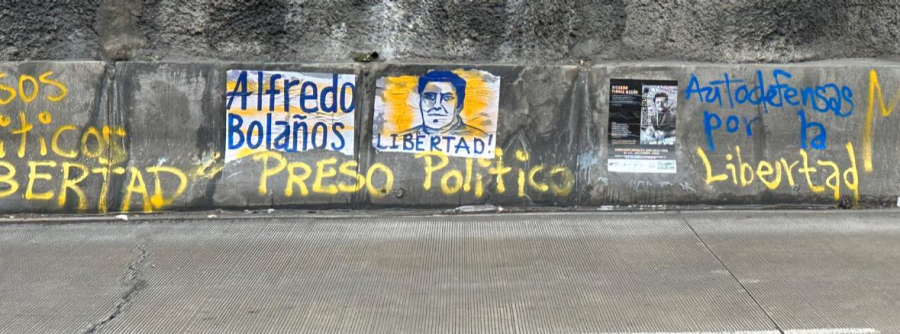
Angélica Ayala (Nahua)
In 2012, during the administrations of former Mexican President Felipe Calderón Hinojosa and Governor Graco Ramírez Abreu, a roadwork project sponsored by the Secretariat of Communications and Transportation (SCT) was approved. The project will widen a 20 kilometer highway through El Tepozteco National Park and the Ajusco-Chichinautzin Biologic Corridor into a four-lane roadway. These areas comprise an area protected by a presidential decree.
State and federal authorities have continued the project without respecting these decrees and without the community’s consent, causing severe impacts on the region. The community has taken numerous steps since the project’s approval to show its discontent and argue why, judicially and socially, it is not viable.
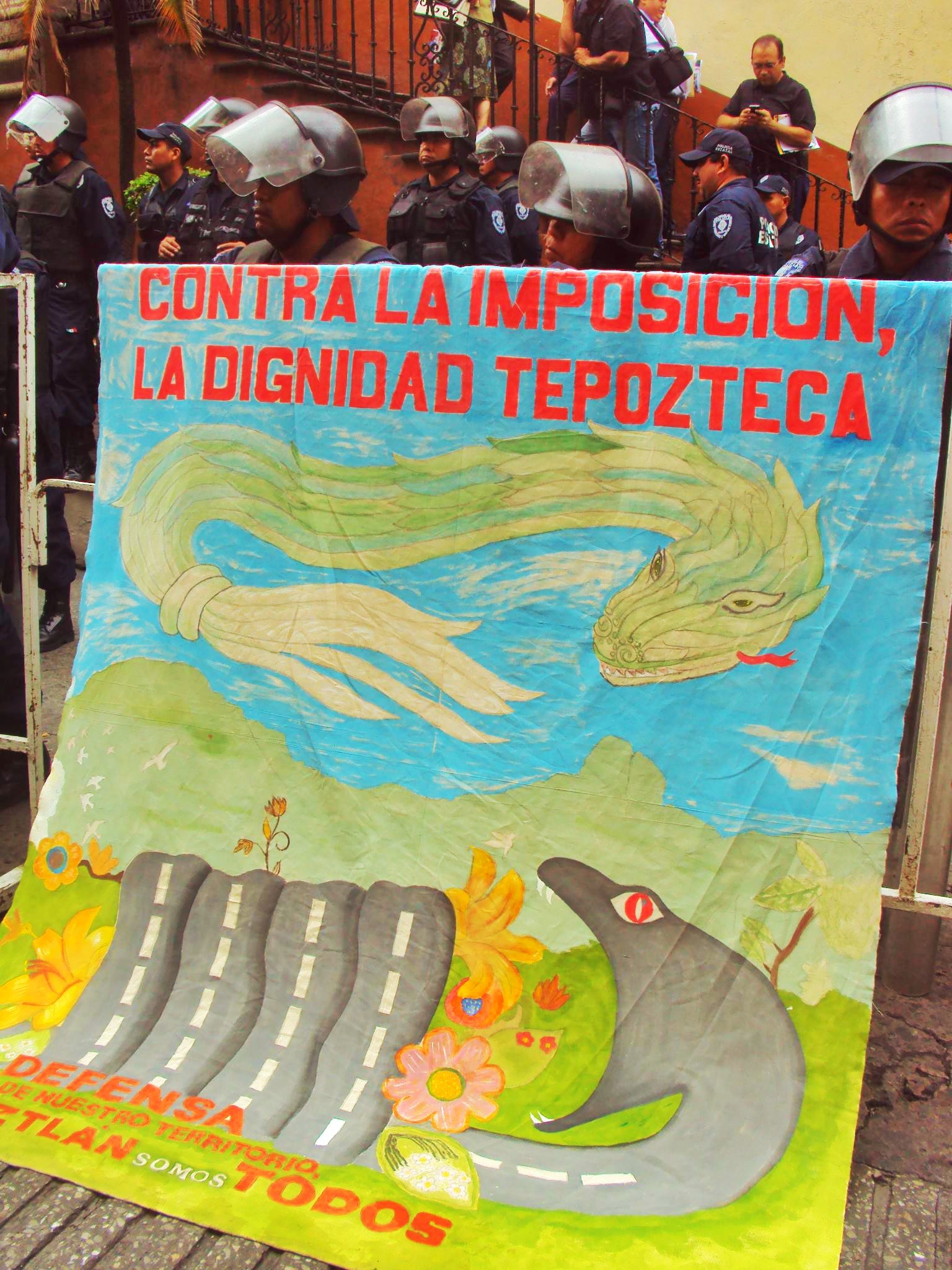
Since September 1, 2012, people from Tepoztlán have mobilized in the city of Cuernavaca, Morelos to protest the widening of the La Pera-Cuautla highway at the hands of former President Felipe Calderón Hinojosa.
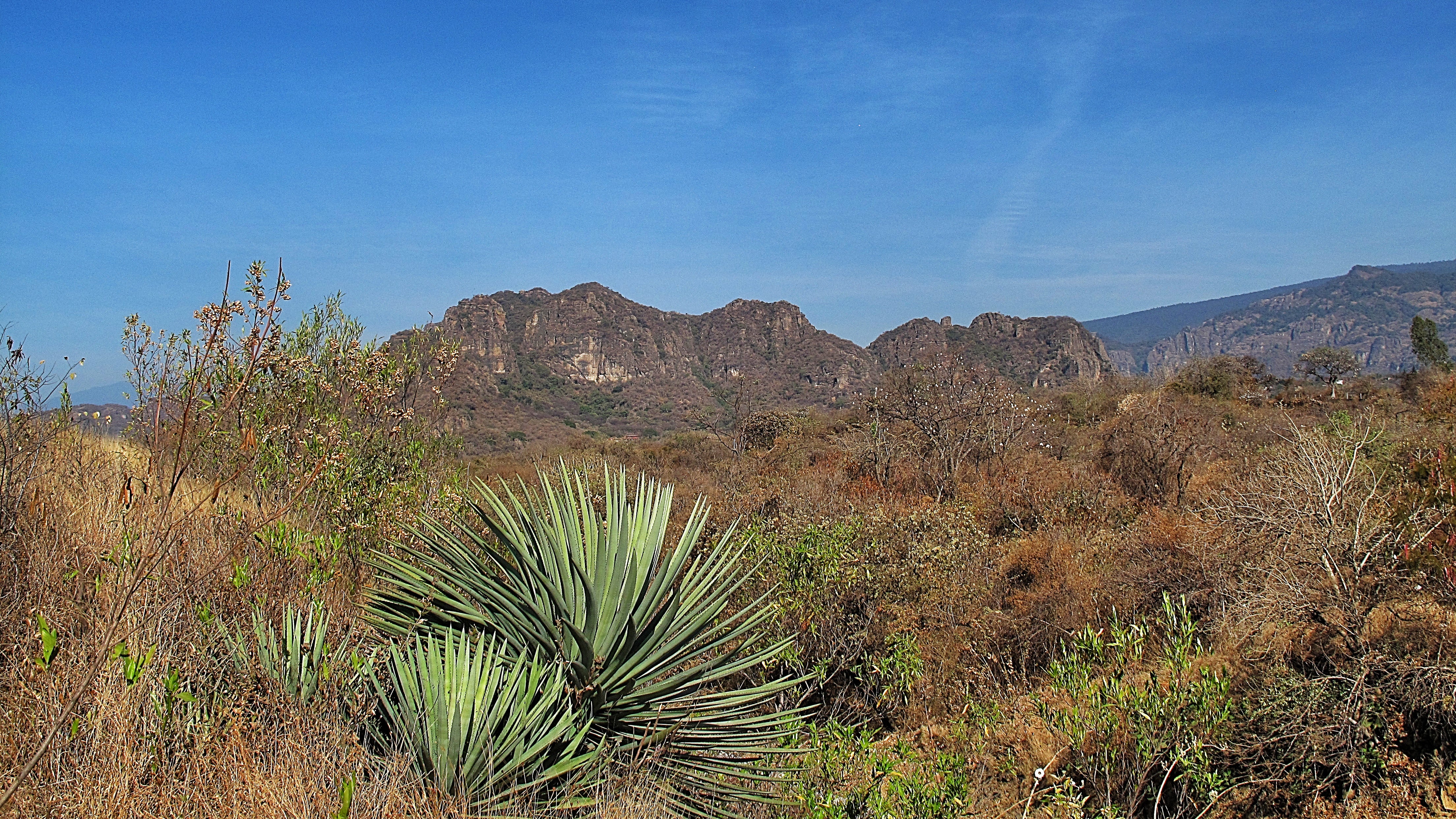
One of the main areas affected by the project is Tlaxomolco, which is in the foothills of Yohualtepetl Mountain, also known as the Nocturnal Vigilante, or the Dwarf.
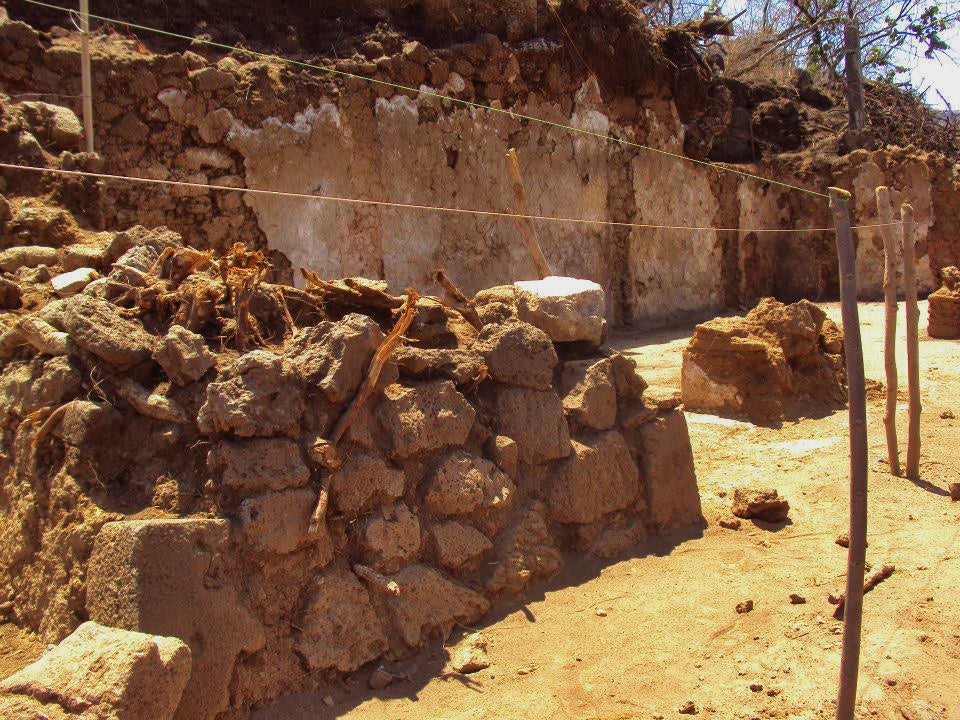
Part of a portico from the Late Classic period (700-900 C.E.), located in the Tlaxomolco archeological zone. Its placement next to the highway will be at risk if the road is widened.
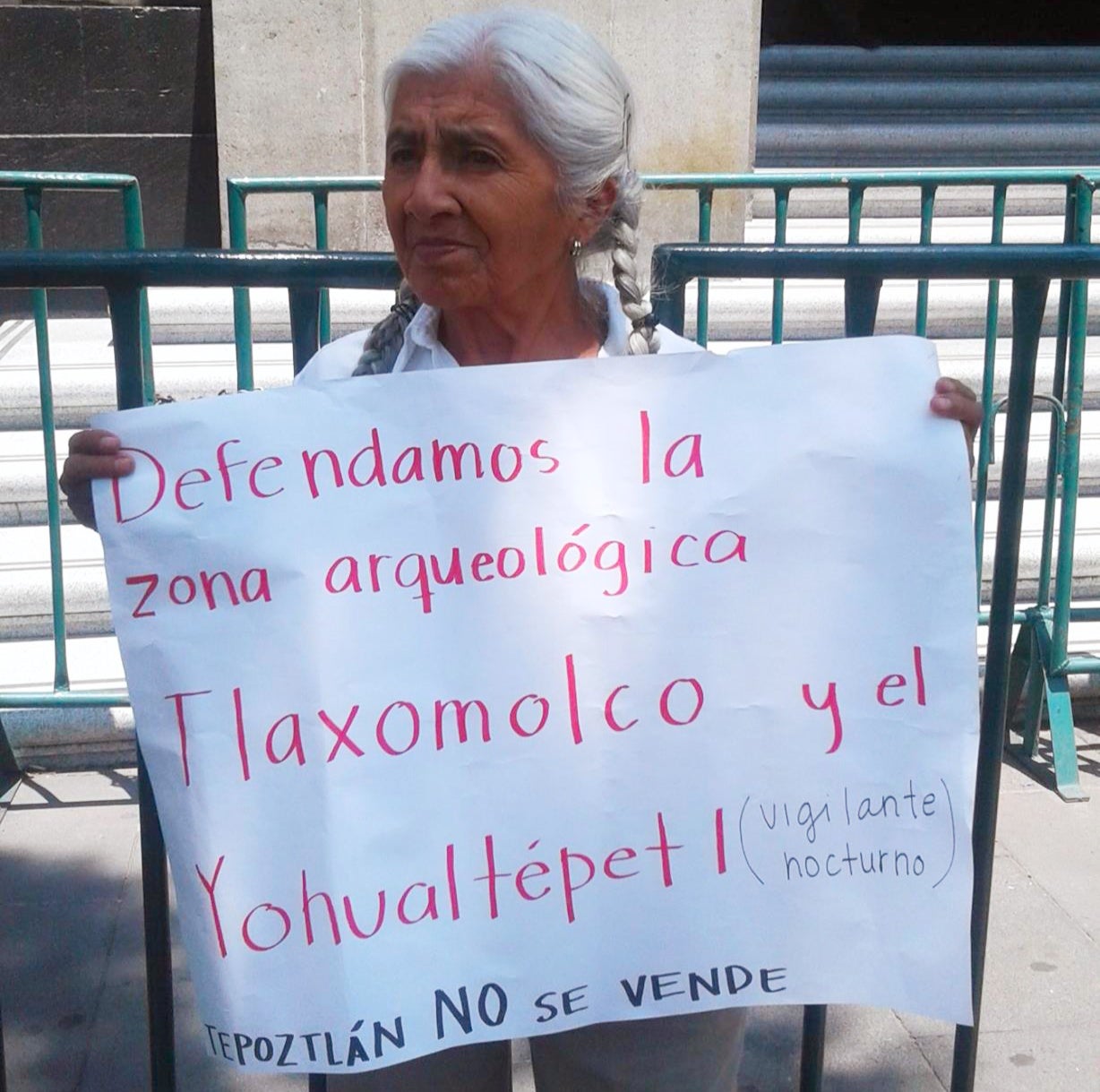
The activist community in Tepoztlán comprises women, men, youth, and children opposed to the destruction of common areas such as the Tlaxomolco archaeological zone and the Yohualtepetl and Cematzin Mountains.
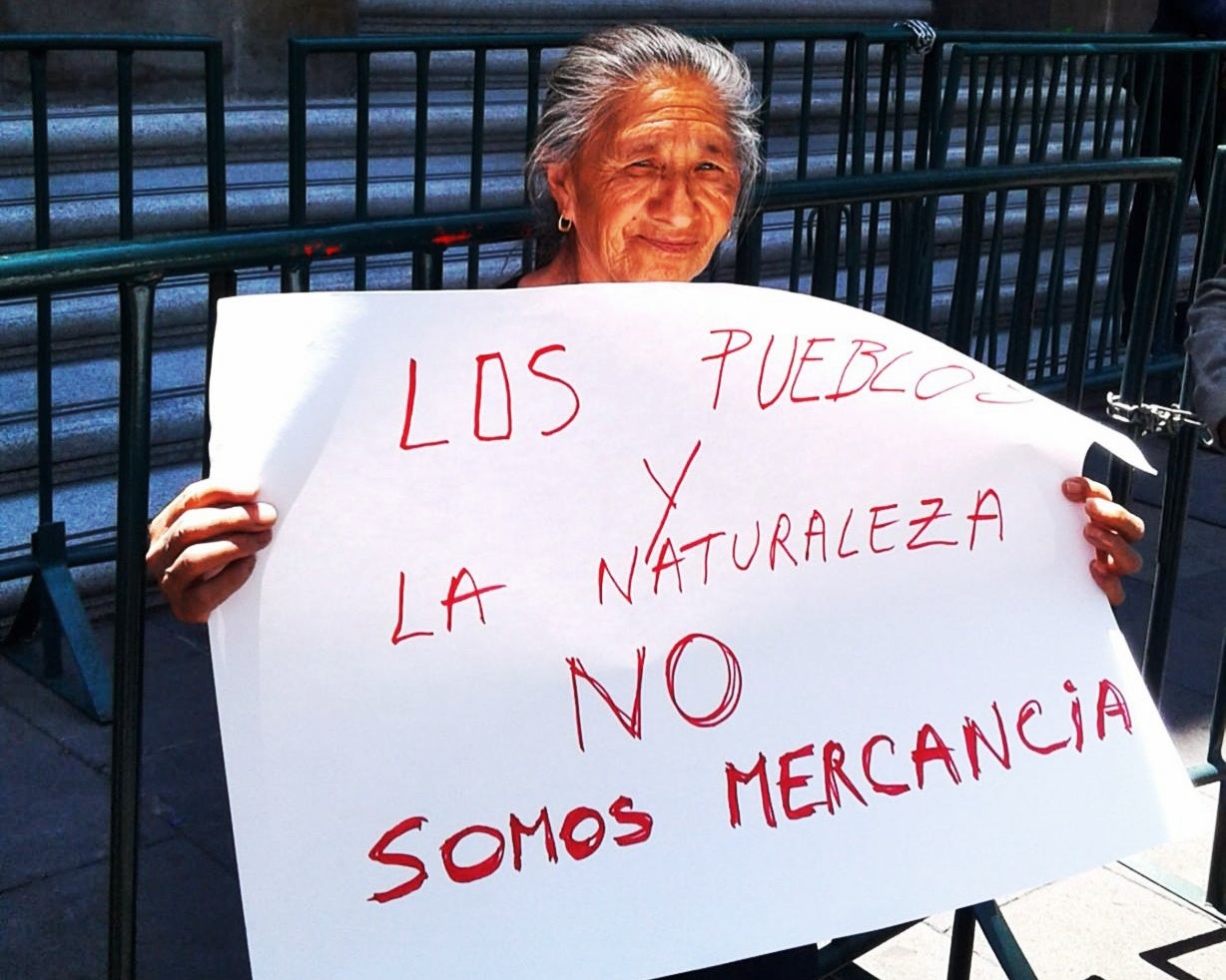
As a part of their efforts to spread awareness of the problem, the youth of Tepoztlán have painted informational murals depicting what they consider important: the local language, historical figures, and actors involved in the current conflict.
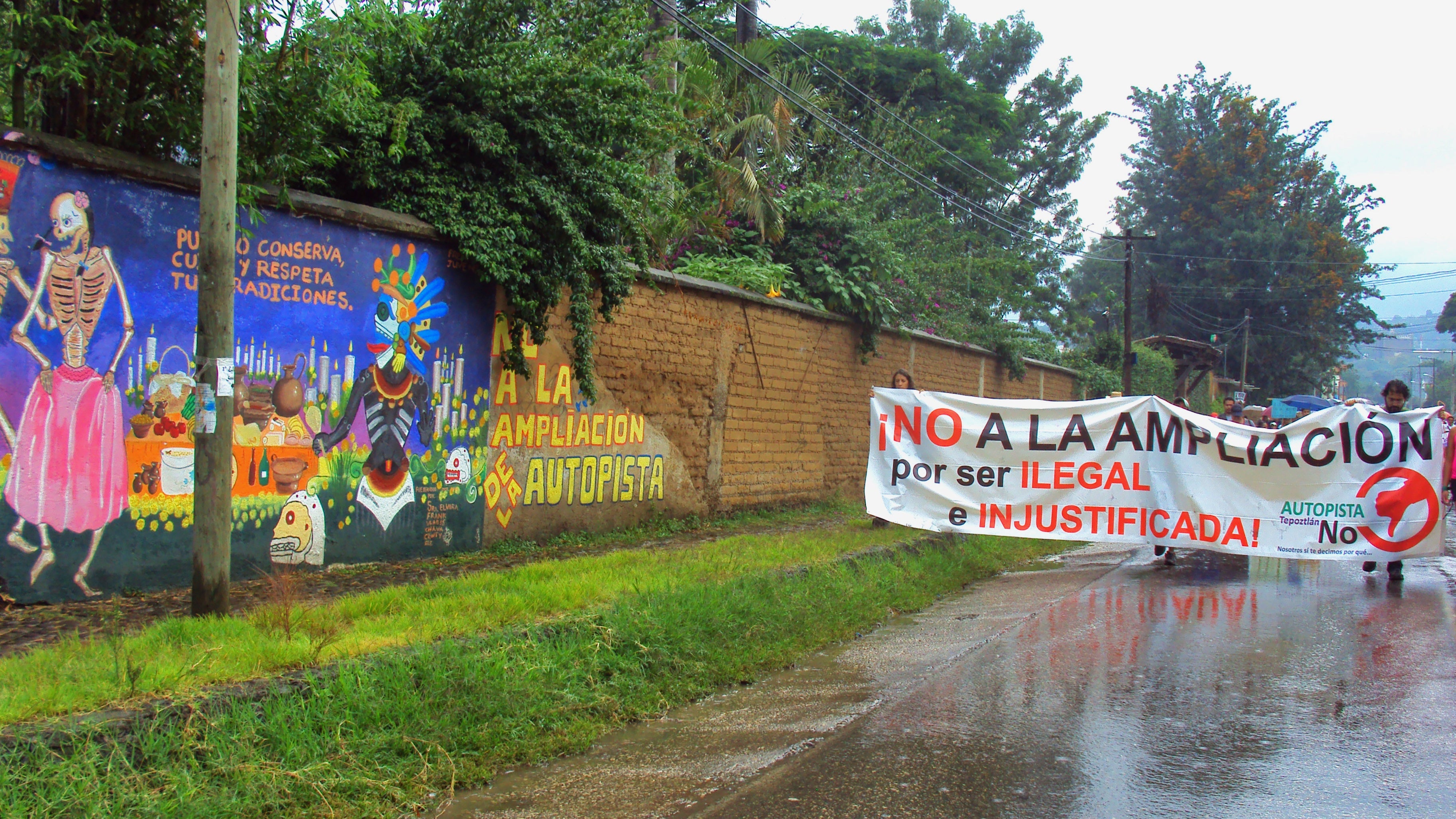
Beyond resisting through art, they have mobilized to inform the population about the project and demand that community authorities disclose the project’s environmental, cultural, economic, and social impacts in assembly meetings.
 As part of the resistance efforts of March 10, 2013, activists set up an encampment they called “El Caudillo del Sur” at the edge of the communal land. The encampment remained until July 23, when farmers attacked the population to allow trucks from the Tradeco company to enter the land illegally.
As part of the resistance efforts of March 10, 2013, activists set up an encampment they called “El Caudillo del Sur” at the edge of the communal land. The encampment remained until July 23, when farmers attacked the population to allow trucks from the Tradeco company to enter the land illegally.
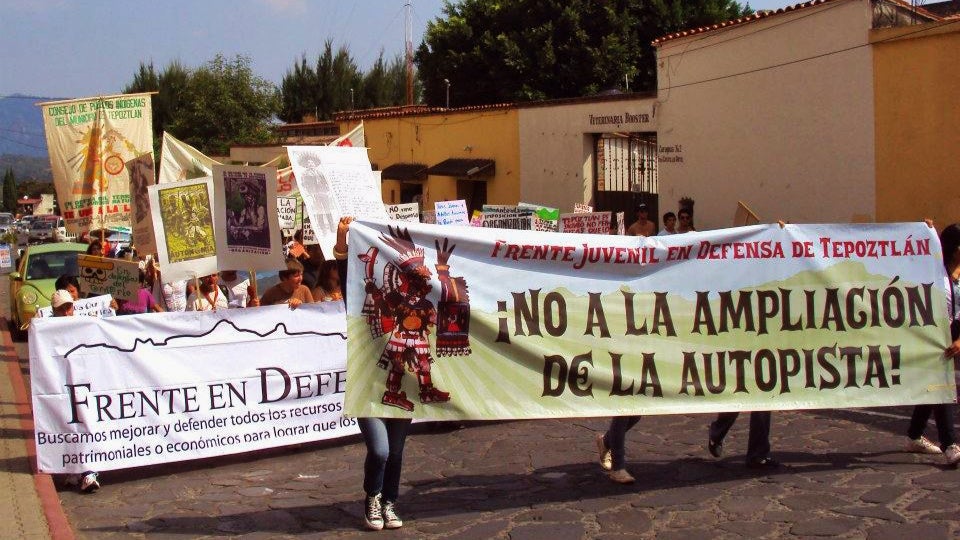
A protest was held in the center of Tepoztlán. People carried banners and posters denouncing the aggression and asserting that the trucks entered the land illegally. Municipal authorities paid no attention.
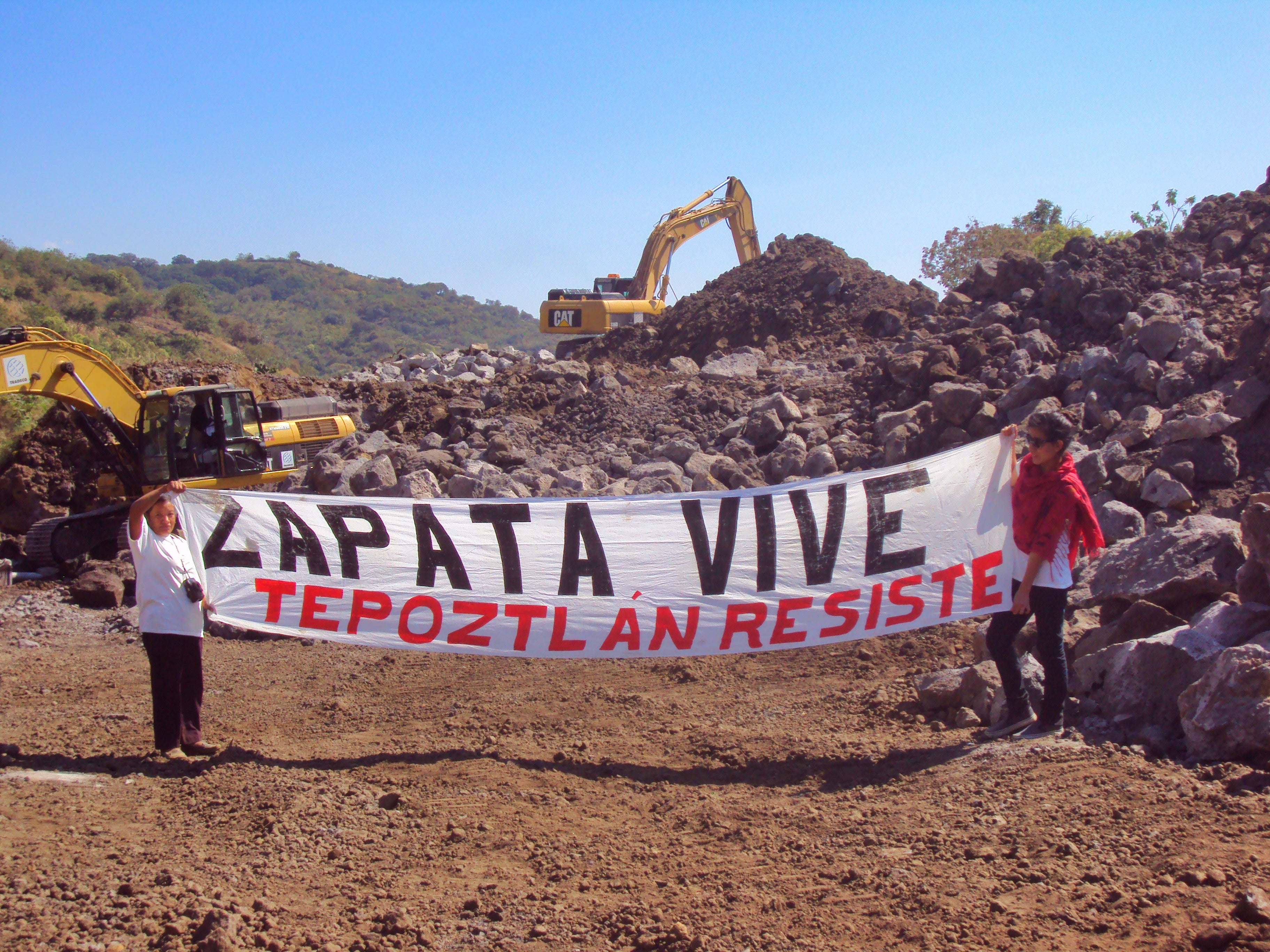
The trucks and digging equipment came to the community in August 2013. Community members were able to delay the project through legal means for three years until the Supreme Court declared the project permissible in 2017, without considering the adverse effects.
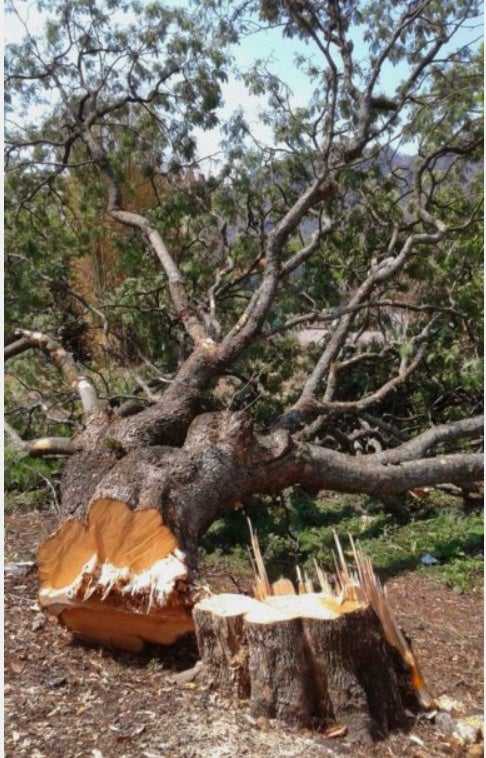
As part of the construction project, on May 19, 2017, the company Angular and Secretariat of Communications and Transportation began to chop down more than 3,000 native trees along roughly 20 kilometers of the highway.
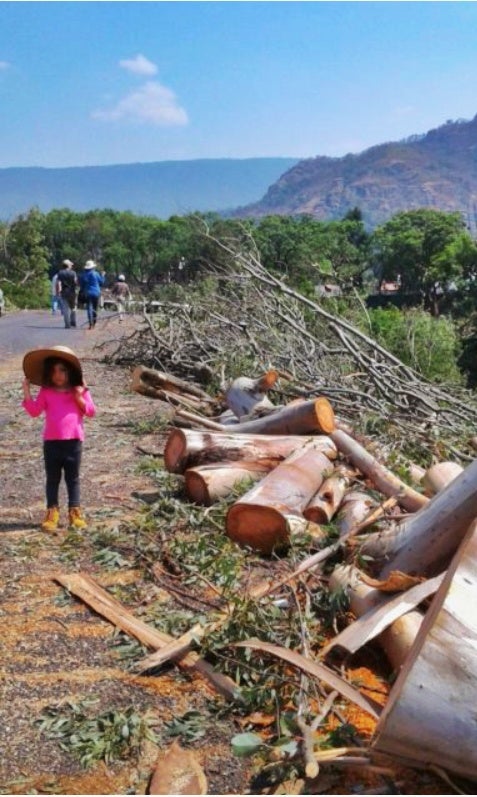
The community complained about the illegal logging numerous times to the Federal Attorney for Environmental Protection. People closed the roadway entering the town with the felled trees and branches. Women, children, and youth ran out any loggers who were still in the area.
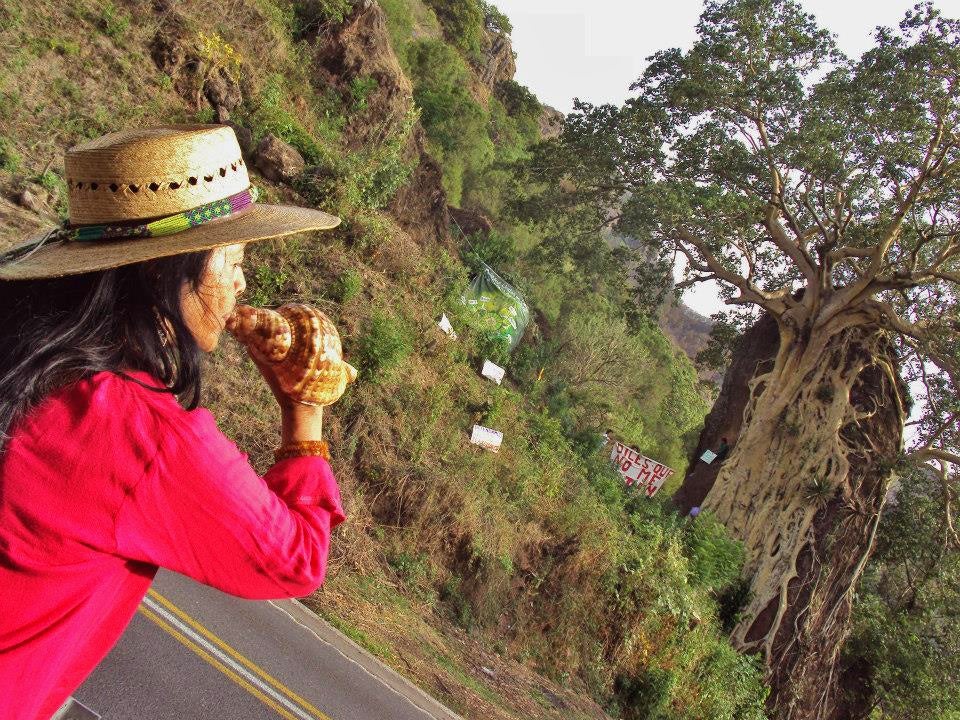
As one of the results of the fight, the Secretariat of Environment and Natural Resources will modify the project and call for a decrease in the planned widening to avoid removing the rock fig tree, one of the symbols of the resistance.
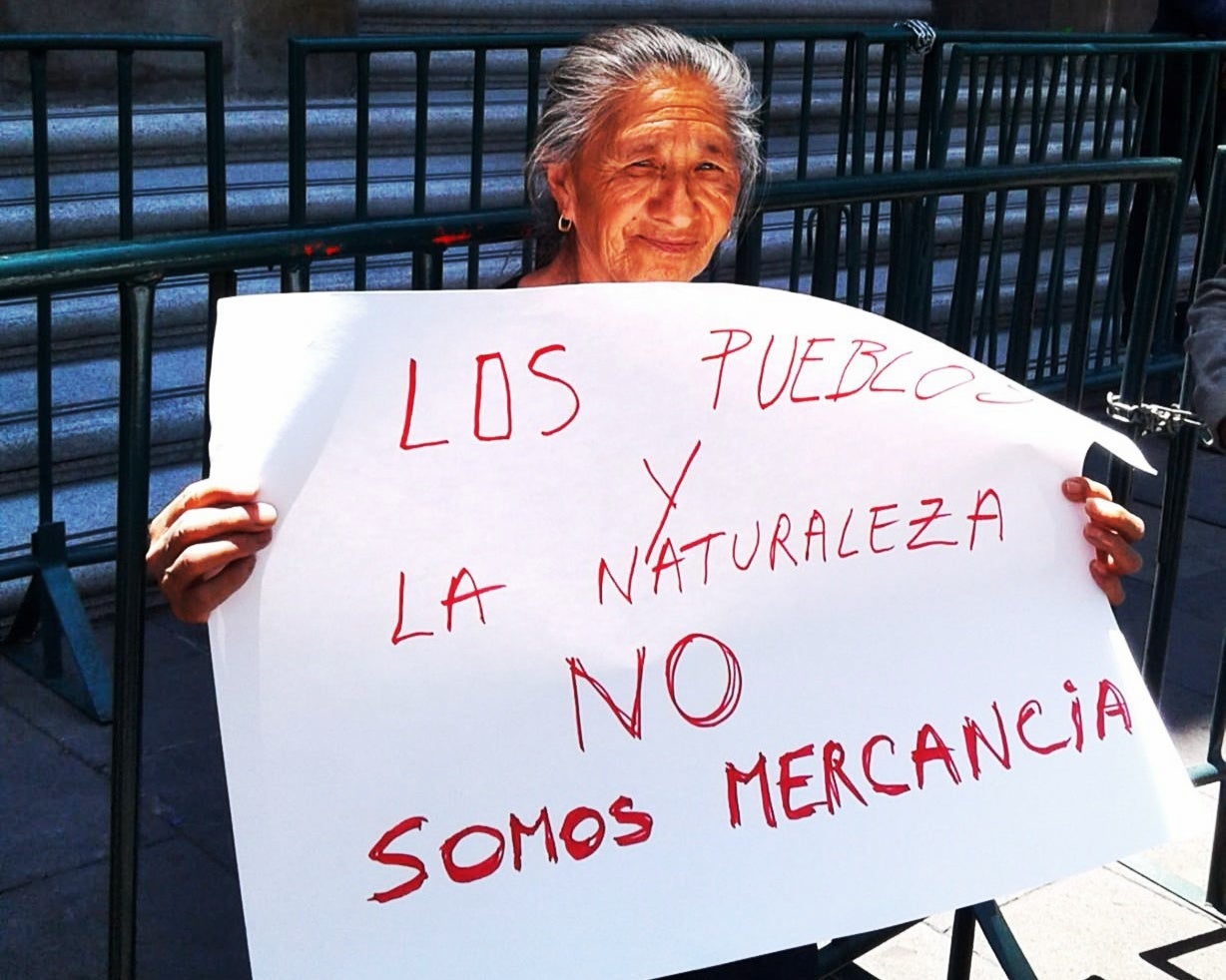
Doña Celina is a native of Tepoztlán and a member of a women’s leadership group. “I’m here fighting with my neighbors for the Tepozteco people because the government wants to appropriate all that we love, and we have to fight until the end,” she says.
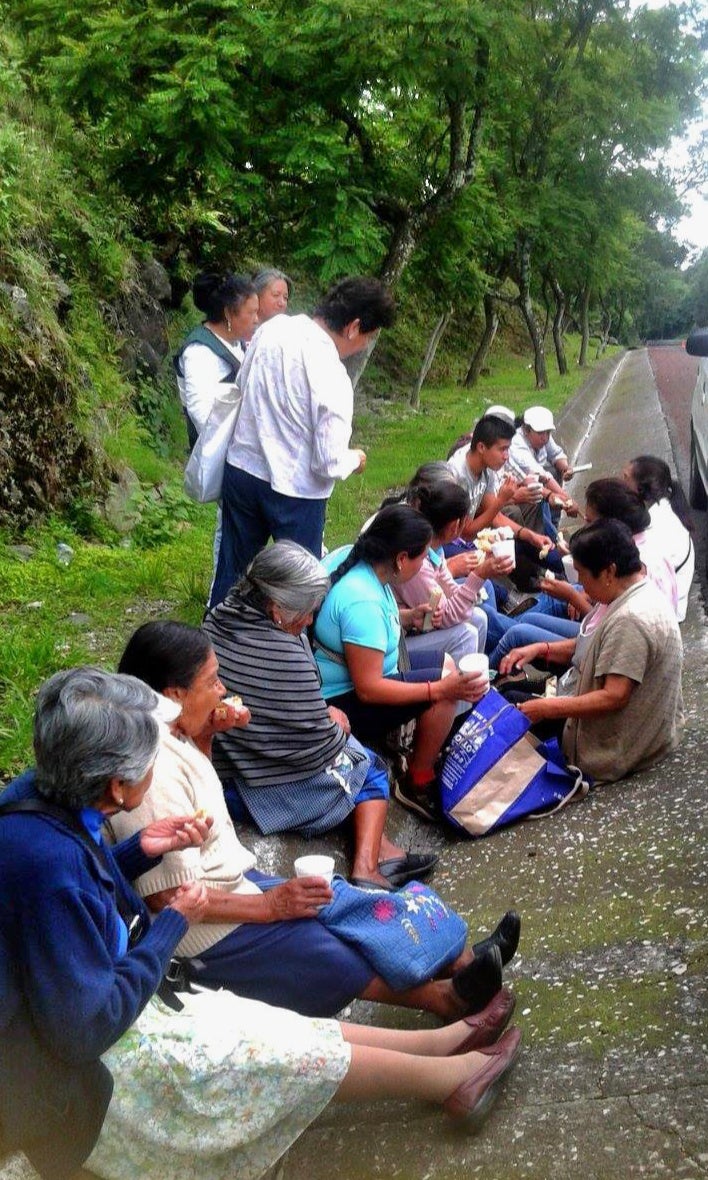
Women from Tepoztlán have been one of the main driving forces of the resistance. In this picture, they gather after a protest on the La Pera-Cuautla highway. Right up until the COVID-19 pandemic, they were the ones holding informative assemblies on Fridays in the town square of Tepoztlán.
Nine years after the project’s approval, the community of Tepoztlán, Morelos, Mexico, continues to resist even as the project has continued. Among their victories are the conservation of the archaeological zone and rock fig tree. It is an honorable fight dedicated to the preservation of the land, its customs, and traditions.
Through the years, they have joined other movements opposed to megaprojects like the Plan Integral Morelos that seeks to construct a thermoelectric generator and gas pipeline. They have stood in solidarity with other communities like Atenco and Xochicuautla in the State of Mexico and have supported the EZLN, or Zapatista Army of National Liberation.
The community of Tepoztlán has dignity and resists injustice. It is a space full of historical memory guarded amongst the hills. Tepoztlán is a community that refuses to wither despite facing a sea of injustice. Tepoztlán is loved, cared for, and defended!
Top photo: Beyond protesting the road construction, the people have also demanded respect for Tepoztlán’s customs.
--Angelica Ayala (Nahua) is an activist defending land and territory in Tepoztlán, Morelos, Mexico. She was a participant in the project “Training Indigenous Women to Defend their Human Rights,” a series of workshops on communication and human rights held between March and June 2021 by Cultural Survival and the Alumni Engagement Innovation Fund. The topics of the trainings included healing, information, and documentation of individual and collective human rights. Different media were used to document and communicate human rights violations, including writing, photography, video, radio, and social media. This photo essay is Ayala's final training project.
